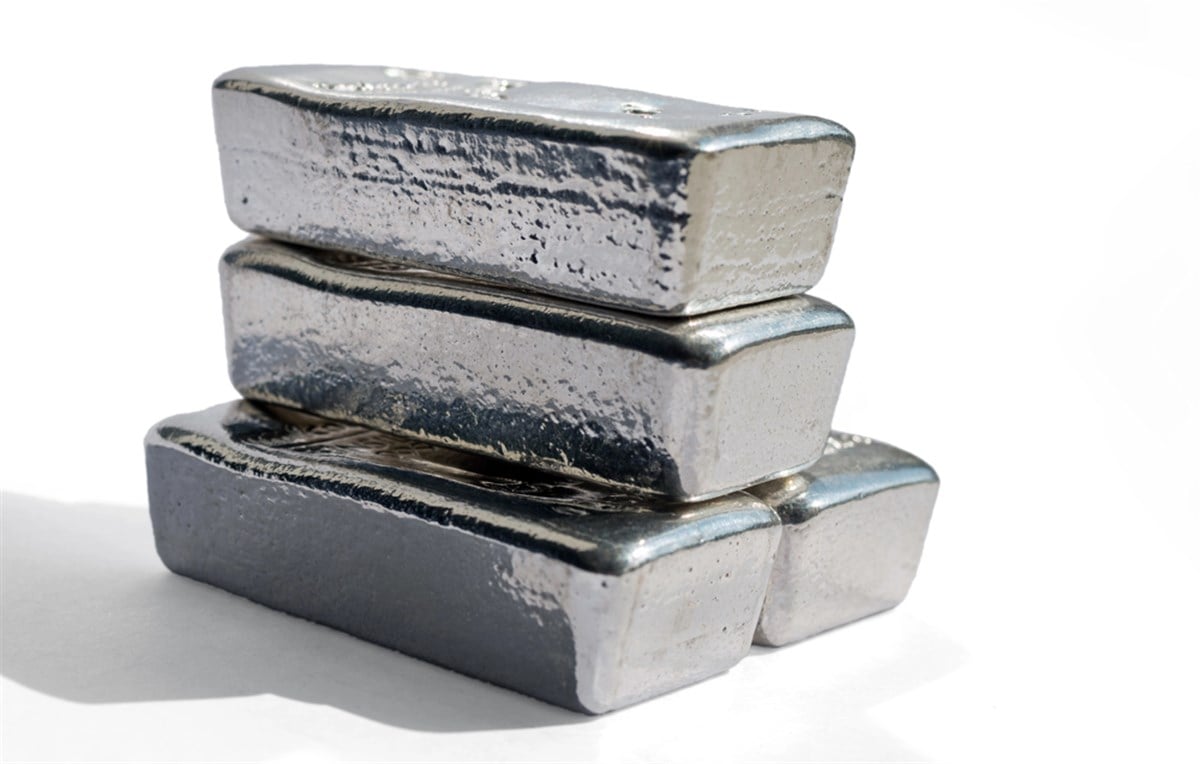 Endeavour Silver's latest earnings show strong revenue growth, but a surprise loss has investors wondering when the mining company will turn... ͏ ͏ ͏ ͏ ͏ ͏ ͏ ͏ ͏ ͏ ͏ ͏ ͏ ͏ ͏ ͏ ͏ ͏ ͏ ͏ ͏ ͏ ͏ ͏ ͏ ͏ ͏ ͏ ͏ ͏ ͏ ͏ ͏ ͏ ͏ ͏ ͏ ͏ ͏ ͏ ͏ ͏ ͏ ͏ ͏ ͏ ͏ ͏ ͏ ͏ ͏ ͏ ͏ ͏ ͏ ͏ ͏ ͏ ͏ ͏ ͏ ͏ ͏ ͏ ͏ ͏ ͏ ͏ ͏ ͏ ͏ ͏ ͏ ͏ ͏ ͏ ͏ ͏ ͏ ͏ ͏ ͏ ͏ ͏ ͏ ͏ ͏ ͏ ͏ ͏ ͏ ͏ ͏ ͏ ͏ ͏ ͏ ͏ ͏ ͏ |
| | Written by Chris Markoch 
Endeavour Silver Corp. (NYSE: EXK) is a good example of the importance of hitting expectations during earnings season. Although the mining company delivered a solid earnings report, shares were down over 4.78%, erasing almost all of EXK stock's gains the week before earnings. The company delivered stronger-than-expected revenue of $85.30 million, beating expectations of $81.48 million. That number was also up an impressive 46% year over year (YOY). However, the bottom line was the source of distress for investors. The company reported negative earnings per share (EPS) of three cents, despite analysts expecting positive EPS of one cent. This was the second consecutive quarter that investors had expected positive earnings, only to be disappointed. For some investors, this raises a concern about the company’s management. If Endeavour can’t be profitable at a time when the price of silver is rising sharply, when will it be profitable? With the company’s Terronera mine still under construction and higher-grade ore access delayed, consistent profitability may not arrive until late 2025 or beyond. Why Spot Price Doesn’t Tell the Whole Story Endeavour cited three key reasons for its negative earnings: - Sharp drop in silver production—Lower ore grades, mine sequencing issues at Guanaceví, and delays in accessing higher-grade stopes cut output.
- Lower realized silver prices—Despite higher spot prices, provisional pricing and the timing of sales meant the company received less per ounce on average.
- Higher costs and project spending—All-in sustaining costs (AISC) rose due to inflationary pressures, higher labor and energy costs, and continued capital spending on the Terronera project, which hasn’t yet contributed revenue.
This is a reminder that investing in mining stocks can be tricky for investors unfamiliar with mining contracts. In this case, the assumption is that if the price of an underlying metal. Silver is rising, then the company’s silver will automatically become more profitable. However, many silver miners, including Endeavour, sell part of their output as concentrate under provisional pricing contracts. At shipment, the buyer pays a provisional price based on the market. Weeks or months later, when the sale is finalized, the price is adjusted to reflect the market. If silver prices drop between shipment and final settlement, the miner takes a negative adjustment, reducing the average realized price. For example, if Endeavour shipped silver concentrate when the market price was $27 per ounce. Still, the final settlement occurred when silver was $26 per ounce, the company would receive $1 less per ounce on that shipment, even if silver later rallied to $29. Depending on price volatility, this common industry factor can work for or against miners. The result is that strong spot prices don’t always translate into strong realized prices, especially in volatile markets. For investors, it’s a reminder that timing and contract terms can significantly impact mining revenue. Growth on the Horizon Growth on the Horizon was the title of the investor presentation that accompanies Endeavour’s earnings report. Endeavour provided reasons to believe it could turn around its earnings. - The Terronera mine is on track for 2025/2026 production—Management reaffirmed that construction is progressing well, with first production expected in late 2025 or early 2026. This mine is projected to more than double the company’s silver-equivalent output and lower its overall cost profile.
- Higher-grade zones are coming online—At Guanaceví and Bolañitos, mine plans call for accessing better ore grades in the coming quarters, which should lift production and margins.
- Leverage to silver price upside—Endeavour remains highly sensitive to silver price movements. If silver strengthens (management suggested they expect tighter supply-demand dynamics), cash flow could rebound quickly.
Still, these catalysts may not meaningfully impact earnings until late 2025 or early 2026. Investors must decide whether to endure another year of uneven results or diversify exposure. To be fair, analysts remain bullish on EXK stock. The consensus price target of the analysts on MarketBeat is $8.33. That’s a gain of more than 51%. For investors wanting to exit EXK stock but who still want exposure to mining stocks, the VanEck Gold Miners ETF (NYSEARCA: GDX) could be an attractive alternative. It’s up about 79% for the year. That’s slightly below the return of Endeavour’s stock. However, it does smooth out the risk from owning one miner and exposes you to gold and silver miners.  Read This Story Online Read This Story Online |  Jeff Brown recently traveled to a ghost town in the middle of an American desert…
To investigate what could be the biggest technology story of this decade.
In short, he believes what he's holding in his hand is the key to the $100 trillion AI boom…
And only one company here in the U.S. can mine this obscure metal. Click here to get the details on this virtual monopoly. |
| Written by Gabriel Osorio-Mazilli 
There is a significant difference between trading and investing. Trading concentrates on short-term fluctuations that may not last, while investing views these short-term events as opportunities to secure upside potential, with the focus on eventually returning to normal behavior, which is inevitable. Today, traders have had their piece of the pie in a stock within the consumer staples sector; now it’s time for investors. Shares of Hershey Co. (NYSE: HSY) declined by 2.2% in a single week as the price of cocoa rose by roughly 20% over the past month, as supply and demand dynamics brought in the effect of good old economic theory. That being said, the higher price of cocoa directly affects costs and margins at Hershey, so traders took this as an opportunity to profit on the stock’s decline. However, investors can see this as an issue that the entire industry will have to face, Hershey’s peers included. Knowing that this will eventually subside, and that Hershey’s size and market share can allow it to cushion these costs and make it out okay from this turbulence, this recent dip can create an opportunity for those focused on the long-term (and those who have enough patience) to see the appreciation in this name. 3 Metrics to Watch in Hershey Stock Despite the cyclically higher prices in cocoa, Hershey is a business that has been around to see situations like these multiple times in its history, so investors can reasonably expect the company to be able to take this one on the proverbial chin and move on stronger than before. As they say, every story without numbers is a fairytale. Hershey’s financials will show investors the numbers they need to see to justify that the company is not in trouble today. Starting with gross profit margins, the heart of any brand's moat and positioning, a “buy the dip” justification begins. Hershey has a gross profit margin of 40.1%, which is impressive for a company valued at $35.7 billion. Still, that's just the beginning. Even with higher interest rates and increased costs from rising cocoa prices, Hershey still reports a net income margin of 13.5%. Knowing that Hershey's average net income margin is about 17%, investors can now watch the cyclical ranges for future cost recovery, when cocoa prices go back to normal and allow Hershey to grow its earnings. This directly translates into shareholder benefits, like higher earnings per share (EPS) and stock valuations, but here’s what matters for investors. Return on invested capital (ROIC) is the one metric primarily responsible for the compounding value of any company into the future, which is why Wall Street is turning bullish on this stock. The Future Is Bright for Hershey Stock With an ROIC rate of 19.3%, this company outperforms most businesses in the United States, including those with international exposure like Hershey. Moreover, investors must recognize that the long-term annual stock price performance tends to match the ROIC over time, meaning investors are set to compound their capital at these rates. Just like net income, however, the average ROIC in Hershey is closer to 25%, meaning today’s stock price reflects the bottom of its fundamental cycle. Taking advantage of this situation and the fact that the stock only trades at 85% of its 52-week high, some Wall Street analysts have shared their opinions on where it could be headed next. While the consensus is set to a Reduce rating, valuing Hershey at $168.8 per share for a 6.3% downside, a few recent upgrades may soon change that consensus. For instance, Barclays analyst Andrew Lazar has assigned an Equal Weight rating and a $190 per share price target, suggesting Hershey can rally by 5.5% from today’s price. Or DA Davidson’s Brian Holland, who takes a Neutral view on Hershey and values it at $188 instead for a 4.4% upside. While these views are not the most bullish, they represent a sudden shift in sentiment. This shift could soon encourage other analysts to feel comfortable upgrading Hershey. Another bullish factor is out there, speaking on sentiment just as much. Institutional buyers from the Vanguard Group boosted their holdings in Hershey stock by 1.1% as of early August 2025, bringing their net position to $3.1 billion or 9.3% ownership in the entire company. Charles Schwab Investment Management followed suit with a 2.5% boost, building up a stake worth $849.1 million as of early August 2025. The effects of higher cocoa prices have been fully realized on the stock, and now savvy investors are stepping in before the rest of the market realizes how much this stock could compound tomorrow.  Read This Story Online Read This Story Online |  Something big is brewing in Washington.
According to my research, an executive order from President Trump could be just weeks away.
And it holds the potential to trigger one of the most explosive tech booms in US history.
At the center of it all? Robots.
Not the kind that clean your house or pour you coffee.
But the kind that could reshape entire industries, add $1.2 trillion per year to the US economy, and affect 65 million American lives — just in the next year. This little-known company holds nearly 100 patents and trades for around $7 |
| Written by Jeffrey Neal Johnson 
While market headlines often fixate on the dramatic swings of tech sector giants, a different kind of investment vehicle has been quietly attracting a surge of strategic interest. The First Trust NASDAQ Clean Edge Smart Grid Infrastructure Index Fund (NASDAQ: GRID), a specialized fund focused on a seemingly routine sector, is exhibiting market behavior typically reserved for high-growth stocks. It has been consistently outperforming the broader market and posting impressive gains, signaling a deliberate shift by investors. This unusual focus points to a growing recognition of one of the most undeniable and capital-intensive megatrends of the next decade: the complete overhaul of the world's energy sector infrastructure. Following the Money Into Grid Modernization The evidence of heightened investor interest in GRID is clearly written in its market data. In 2025, the fund has delivered a year-to-date return of over 20%, recently pushing to a new 52-week high of $145.44. This price action is supported by notable trading activity, with daily volume frequently spiking above its 166,000-share average. This indicates active and broad participation from market players. With a beta of 1.25, the fund exhibits more volatility than the S&P 500, a characteristic that has rewarded investors during its recent uptrend. Beyond daily trading, a look at capital flows reveals a deeper, more strategic trend. Over the last 24 months, GRID has attracted significant institutional attention, with net inflows exceeding $1.2 billion. This large-scale movement of capital suggests that sophisticated investors are making long-term allocations, viewing the grid modernization theme as a core holding for the future. The Power Problem: Why the World Needs a New Grid Investor interest in GRID is grounded in a fundamental reality: the world’s electrical grid, a 20th-century marvel, is unprepared for 21st-century demands. This urgent need to modernize has created a multi-decade investment super-cycle, with some market research firms projecting the global smart grid market to grow to over $100 billion annually by the end of the decade. Several powerful and interlocking catalysts drive this spending: - Electrification of Everything: The simultaneous rise of electric vehicles (EV), electric heating, and industrial electrification is creating unprecedented demand that aging grids cannot handle.
- The AI Power Crunch: The artificial intelligence (AI) revolution has introduced a massive new variable. Data centers required for training AI models are incredibly energy-intensive, and their power consumption is growing exponentially. A stable, high-capacity grid is no longer just a convenience; it is the essential foundation for the continued growth of the entire technology sector.
- The Clean Energy Mandate: The global shift to renewable energy sources like wind and solar presents a unique challenge. These sources are often intermittent and located far from population centers, requiring a smarter, digitized grid to manage energy flow, storage, and reliability.
This upgrade cycle is not theoretical. It is being actively funded by government policy. In the United States, legislation like the Infrastructure Investment and Jobs Act and the Inflation Reduction Act has allocated tens of billions of dollars toward grid modernization and clean energy projects. These programs act as a financial backstop, de-risking private investment and creating a predictable, long-term stream of revenue for the companies at the heart of this transformation. The Companies Building the New Grid The GRID ETF offers investors a direct and diversified way to invest in this trend. With just over 100 holdings, the fund is concentrated but globally diverse, with about 26% of its assets in the United States and the remainder spread across developed markets in Europe and Asia. The portfolio holds the key companies supplying the essential technology and services for the grid overhaul. The fund’s industrial core consists of global leaders like Eaton (NYSE: ETN), which makes up 8.76% of the portfolio, Schneider Electric (OTCMKTS: SBGSF), which accounts for 7.82%, and ABB (NYSE: ABBNY), which represents 8.34%. These companies provide the core hardware, from advanced circuit breakers and transformers to sophisticated power management systems. Their products are fundamental not only for upgrading public utility networks but also for outfitting the new, power-hungry data centers. Engineering and construction firms like Quanta Services (NYSE: PWR) represent the boots on the ground, responsible for the physical construction and maintenance of this new infrastructure. Finally, the fund's inclusion of technology giants like NVIDIA (NASDAQ: NVDA) highlights the “smart” investment in smart grid technology. While a smaller holding, its presence underscores a critical point: NVIDIA’s chips power the AI revolution, which in turn creates the immense energy demand issue that GRID’s other companies are being paid to solve. Why GRID's Story Is Just Beginning The recent surge in attention for GRID signals the market's recognition of a foundational, non-discretionary requirement. Modernizing the energy grid is not an optional or speculative endeavor. It is the essential backbone required to support nearly every other major technological and economic ambition, from artificial intelligence to a clean energy economy. By blending defensive industrial champions with innovative technology leaders, the fund provides a unique way to invest in the picks and shovels of this global overhaul. For investors seeking targeted exposure to a durable, multi-decade megatrend, the story behind GRID's rise offers a compelling case for the future of energy infrastructure. Its global diversification across dozens of companies further strengthens this position, ensuring the investment is tied not to the cycle of a single country, but to a synchronized, worldwide push for modernization.  Read This Story Online Read This Story Online |  When Trump returned to office, one of his first moves was to tap PayPal's former COO, David Sacks, as a top advisor on crypto and AI. That alone signaled a shift. But insiders close to D.C. aren't just talking crypto policy—they're quietly buying something most retail investors have missed.
While the crowd chases Bitcoin to $150,000, Weiss Ratings expert Juan Villaverde believes a different coin—already backed by giants like Google, Visa, and PayPal—could soon become crypto's "Third Giant." Discover the coin that could define Trump's crypto presidency. |
|
| |
|
|
0 Response to "🦉 The Night Owl Newsletter for August 17th"
Post a Comment